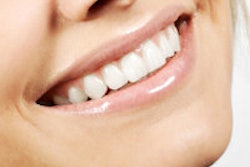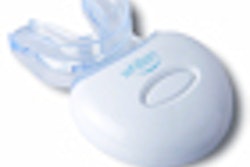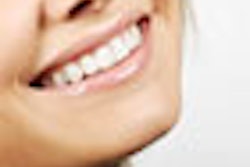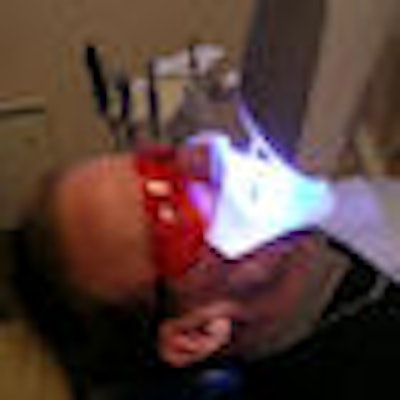
Ultraviolet (UV) light not only doesn't enhance teeth bleaching, it can actually be dangerous to patients and dentists exposed to it, according to a study published last month in an advance online version of Photochemical & Photobiological Sciences (January 16, 2009).
UV light is claimed by most manufacturers to further activate the oxidation process of hydrogen peroxide, thus improve bleaching efficiency. But lead author Ellen Bruzell, Ph.D., of the Nordic Institute of Dental Materials said her team's research found no evidence to support this claim and that, in fact, UV light-assisted teeth bleaching can damage skin and eyes up to four times more than sunbathing.
The manufacturers cited in the study did not respond to repeated requests for comment.
|
Ten to 20 teeth were investigated per product. All teeth were sectioned buccolingually to obtain two separate halves of each tooth. The buccal surface of one half was bleached and exposed to the UV light according to manufacturer recommendations, while the other half was bleached without irradiation.
The bleaching effect for both groups was measured immediately after treatment and one week later. One week after bleaching, there was no significant difference in efficacy between those teeth bleached with irradiation and those bleached without irradiation, Bruzell and colleagues noted. Tooth surfaces were examined for adverse alterations after bleaching using a scanning electron microscope, and international guidelines on optical radiation were used to assess eye and skin exposure hazards due to UV and visible light emission from the lamps.
"Optical radiation of wavelengths between approximately 370 and 700 nm and radiation doses of 1-2500 J/cm² did not improve bleaching efficacy relative to bleaching without irradiation," they wrote.
In fact, they found that bleaching actually damaged teeth, with more exposed grooves on the enamel surface of bleached teeth than on unbleached teeth. These grooves make the teeth more vulnerable to mechanical stress, the authors noted.
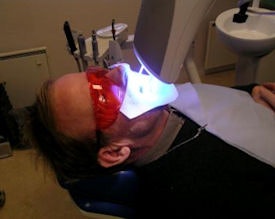 |
|
Image courtesy of Ellen Bruzell, Ph.D., Nordic Institute of Dental Materials. |
Unnecessary exposure to radiation is also an issue, according to Bruzell. She and her colleagues demonstrated that, for the majority of the light sources tested, the amount of radiation a person is exposed to during the bleaching process poses a risk of damage to the skin and eyes if proper protection -- such as UV-blocking safety glasses -- is not used.
"The use of optical radiation in tooth bleaching poses a health risk to the client and violates radiation protection regulations. Therefore, we will advise against light-assisted tooth bleaching," they concluded.
"This study emphasizes that safety precautions are necessitated not only to protect the oral soft-tissue, skin, and eyes from the bleaching product, but also the potential adverse effects of irradiation from a light source," Dr. Gimbel added.
Copyright © 2009 DrBicuspid.com




